Toyota develops its vehicles and technology under the umbrella of an ‘Integrated Safety Management Concept’, one part of a three-pronged approach which involves continual improvement in vehicle safety as well as initiatives to improve driver and pedestrian awareness and to create a safe traffic environment.
Toyota’s eventual aim is to realise a society where traffic accidents are a thing of the past, which is why decades of research into safety technologies have resulted in Toyota cars receiving consistently high results in Euro NCAP crash safety tests, with the Prius, Yaris, Auris, Verso, Avensis and RAV4 achieving the maximum five-star award.
Toyota’s THUMS computer-modelling system has greatly helped the progress made in occupant and pedestrian safety. In this post, we take a look at some of the passive safety technologies that protect occupants in the event of a collision:
Impact-Absorbing Body and High-Strength Cabin
Seatbelts with Pretensioners and Force Limiters
Whiplash Injury Lessening (WIL) concept seats
Active Headrests
SRS Airbags
ISOFIX child seat mounting points
Impact-Absorbing Body and High-Strength Cabin
The safety of occupants in a collision begins with the construction of the vehicle itself. Since 1968, Toyota has designed and built its vehicles to have impact-absorbing body structures that will crush in the event of an accident, soaking up as much energy from the collision as possible.
In 1987, Toyota further improved occupant safety with the introduction of a high-strength safety cabin that dissipates energy throughout the entire body and minimises damage to the passenger compartment.
Seatbelts with Pretensioners and Force Limiters
Toyota introduced the three-point seatbelt in 1967, and the humble but vital restraint device has been saving lives ever since with little significant change to its design.
Seatbelts are immensely strong – capable of withstanding a weight of two tons – and are designed to control the movement of occupants within the cabin, particularly by limiting any impact to the chest during an accident. Yet they are also comfortable to wear in everyday driving, essential in encouraging occupants to use them on every trip.
In 1991, Toyota added pretensioners to seatbelts, a mechanism that instantaneously retracts the seatbelts when a strong frontal impact is sensed. This, in effect, quickly clinches the seatbelt to remove any slack in the belt and tightly grip the occupant before the full force of the impact is felt by the body.
Force limiters were introduced in 1997 and work in harmony with the pretensioners to protect the occupant while minimising the impact of the seatbelt itself to the occupant’s chest. Force limiters maintain an adequate amount of tension on the seatbelt to restrain the occupant without the force of the restraint causing injury.
Seatbelts with pretensioners and force limiters are fitted to all Toyota passenger vehicles in the current range.
Whiplash Injury Lessening (WIL) concept seats
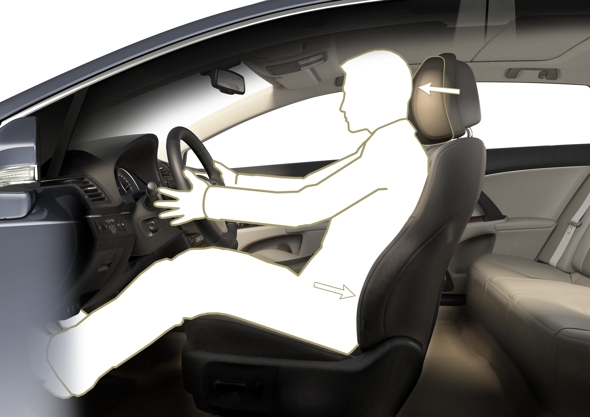
Just over half of injuries sustained in accidents in Japan were as the result of rear-end collisions, but approximately 90% of those injuries were neck injuries. That’s why Toyota developed the Whiplash Injury Lessening (WIL) concept seat, which first debuted in 1997 and was updated further in 2005.
The WIL concept seats are designed to cushion and support the occupant’s head and chest simultaneously, minimising the injury occurring from the head and torso moving in different directions. Toyota used its THUMS virtual-human computer modelling to confirm the effectiveness of the WIL concept seats in reducing whiplash injuries in lower speed rear impacts.
WIL seats are fitted as standard to most Toyota models, including Yaris, Auris, Prius, RAV4 and Land Cruiser.
Active Headrests
Active Headrests, introduced in 2007, are an extension to the WIL concept seats that further minimise neck injuries in rear-end impacts. A sensor in the seat is triggered by the lower back pressing into the seatback and activates the active headrest, which moves diagonally upwards and forward to catch the back of the head.
This technology decreases the severity of whiplash injury by a further 10-20% compared with the WIL concept seat on its own.
Active Headrests are featured on selected models in the Prius family, as well as Verso, GT86 and Land Cruiser.
SRS Airbags
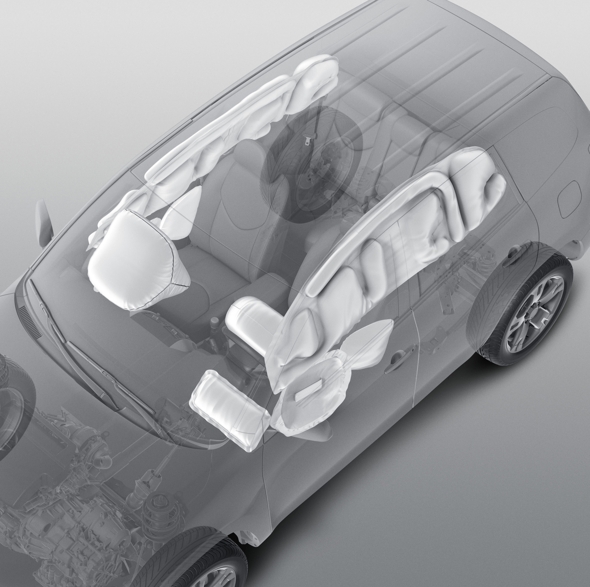
The first SRS (Supplemental Restraint System) airbag was fitted to a Toyota in 1989, providing protection solely for the driver. Since then, Toyota’s SRS airbag systems have been expanded throughout the passenger cabin to the extent that some Toyota models have nine or more airbags that create a protective cocoon around their occupants.
SRS airbags are triggered in the event of serious collisions, inflating rapidly to produce cushion the occupant and reduce the risk of severe or fatal injury. Dependent on the model, SRS airbags include front airbags for head and chest protection, knee airbags, side airbags, curtain shield airbags, seat cushion airbags and even the revolutionary rear window curtain shield airbag specially developed for the tiny Toyota iQ.
ISOFIX child seat mounting points
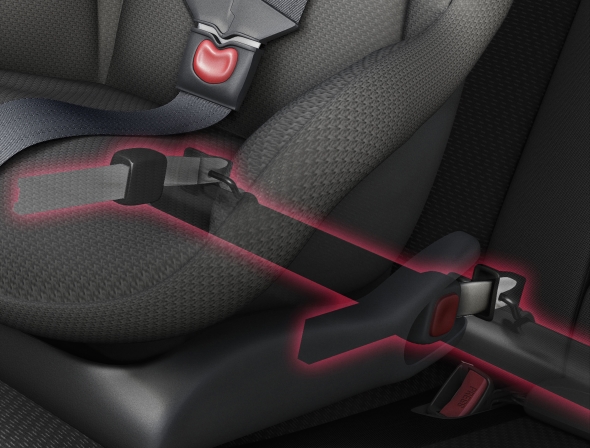
ISOFIX is an internationally recognised standard that sets out the specification for secure anchoring of child safety seats in cars, consisting of two anchor points at the base of the rear seats and a top tether point. ISOFIX greatly reduces the risk of improperly fitted child seats, thereby increasing the safety and effectiveness of the child seat.
Occupant safety is a priority for Toyota, so all Toyota passenger vehicles are equipped with ISOFIX child seat mounting points.
To learn more about other Toyota safety technologies, see these related posts:
Braking technologies
Stability and control technologies
Monitoring systems
Safety through convenience
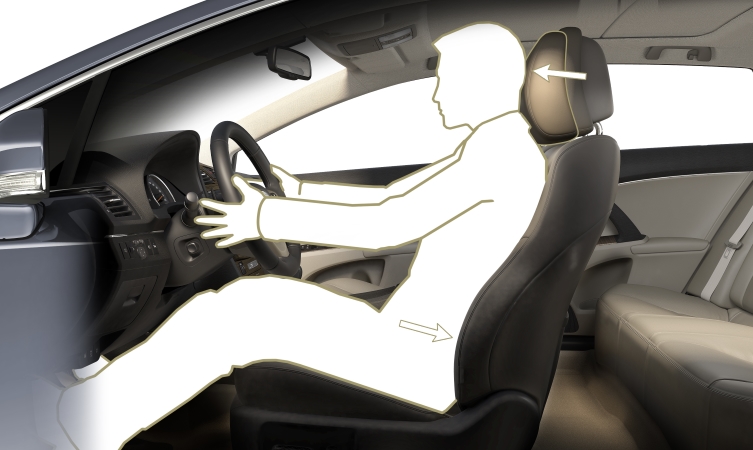
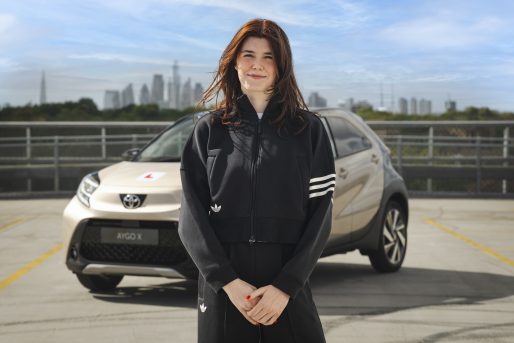

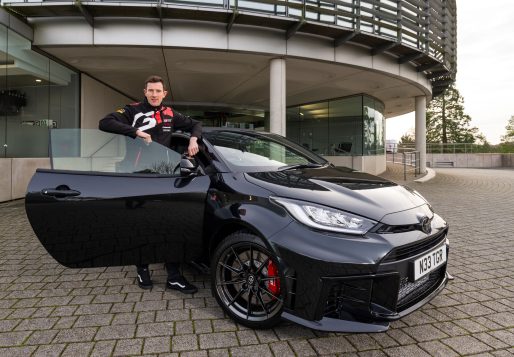
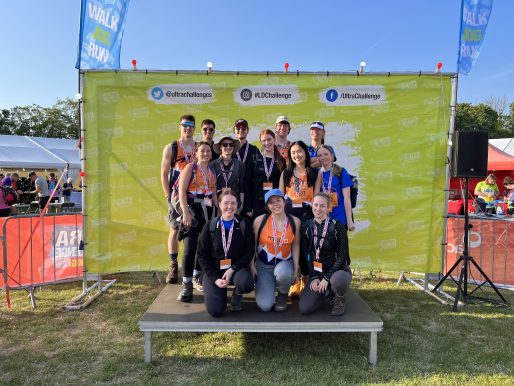
Hello, my Toyota Corolla (GD06 XCU) has the two ISOFIX anchor points at the base of the rear seats. Can you please confirm if it also has a top tether point please?
Many thanks
Steve
Hi Steve,
Thanks for your comment.
Our records show that your vehicle has ISOFIX fittings, although a top tether is not mentioned.
You can check this yourself as, if a top tether has been fitted, this should be visible on the rear of the seat.
Thanks.
Hello,
Is my corolla 2004(KB04ghx) has a top tether, please? As I can not find it anywhere.
Thanks
Hi Kasia,
Thanks for your comment. We hope your Corolla is still serving you well!
We’ve checked with our wider technical team, and your vehicle appears to have an ISOFIX bar at the base of the rear seat backs but no top tether mounting point.
Thanks.
Hi
Can you please confirm if my Toyota Yaris (PJ09 VFO) UK model manual has isofix points? If so, are there instructions available re: how to fit an isofix base? Thank you.
Hi Aishah,
Thanks for getting in touch.
We can confirm that your Yaris has ISOFIX fixings on the outer rear seats.
There should be instructions regarding fitting an ISOFIX base in your owner’s manual.
If you no longer have your owner’s manual, you can either order one or use a newer model’s manual as a guide.
The manuals for newer models can be found, here: https://www.toyota.co.uk/tme#/my-toyota/eManual
Thanks.
Hi, does this auris gp08 xod have isofix installed on front passenger seat?
Hi Zaynab,
Thanks for getting in touch with us. We hope your Auris is serving you well!
We’ve checked with our wider technical team, and your Auris has ISOFIX fixings on the outer rear seats only.
Thanks.
Hello! Could you please check for me, please, if our Toyota Corolla 2004 FT53 AOF is suitable for isofix base car seat? Thank you in advance!
Hi Bianca,
Thanks for your comment.
Your Corolla is listed as having a child restraint anchor, which usually means that it has ISOFIX.
You can check this by examining the bottom corners of the rear seat, where there should be a logo to say that the vehicle has ISOFIX. You should also be able to see the metal bar that the child seat will clip onto.
Thanks.
Hi can you confirm whether my 2012 Toyota Aygo NA62EFS is suitable for an isobase? thanks
Hi Jmaie,
Thanks for your comment.
We’ve checked our database and can confirm that your vehicle comes with ISOFIX fixings as standard.
Instructions on installing child restraints can be found in the Owner’s Manual from p.106 onwards: https://fal.cn/39QUA
Thanks.
Hi, is my Toyota Corolla Verso 2008 have a top teather?
Hi Marina,
Thanks for getting in touch with us.
We would recommend contacting the Toyota distributor in your region for further help with your query.
Thanks.
Hi, would you be able to check if my Yaris 2001 has isofix? It’s Y447VOR. Thanks in advance
Hello, would you be able to check if my Toyota Yaris VVT produced 2005 with Number VNKKL123X0A198682 has ISOFIX? Thank you in advance!
Hi Petar,
Thanks for your comment.
For further help with your query, we would recommend contacting the Toyota distributor in your region.
Thanks.
Hi Olive,
Thanks for your comment. We hope your Yaris is still serving you well!
We’ve checked with our wider technical team, and your Yaris does not have ISOFIX fixings.
Thanks.
Thank you team! That helps a lot.
It’s our pleasure, Olive!
We wish you many more happy journeys in your Yaris.
Hi – does my Toyota Yaris reg VE59 KPR have Isofix fixtures?
Thank you
Hi Collette,
Thanks for getting in touch. We hope you’re still enjoying your Yaris!
We’ve checked our database, and your vehicle is listed as having ISOFIX fixings on the outer rear seats.
Thanks.
Hi, can you check mine as well for isofix please? Reg RE07YHV
Many thanks
Hi Csilla,
Thanks for getting in touch with us.
We’ve checked our database and can confirm that your vehicle comes with ISO-FIX on the outer rear seats as standard.
Thanks.
Hi does my Auris reg KV08 NFL have isofox fitting?